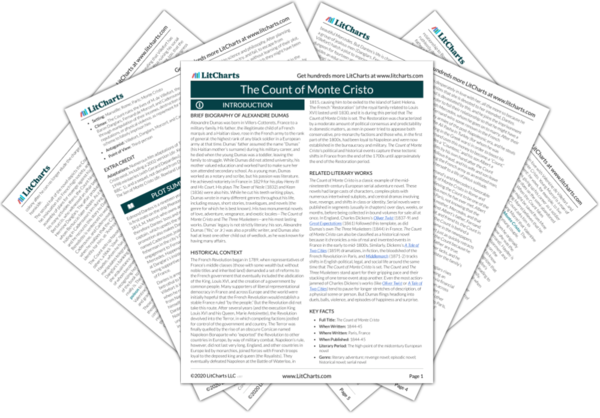The Count of Monte Cristo is a classic example of the mid-nineteenth-century European serial adventure novel. These novels had large casts of characters, complex plots with numerous intertwined subplots, and central dramas involving love, revenge, and shifts in class or identity. Serial novels were published in segments (usually in chapters) over days, weeks, or months, before being collected in bound volumes for sale all at once. In England, Charles Dickens’s
Oliver Twist (1837-9) and
Great Expectations (1861) followed this template, as did Dumas’s own
The Three Musketeers (1844) in France.
The Count of Monte Cristo can also be classified as a historical novel because it chronicles a mix of real and invented events in France in the early to mid-1800s. Similarly, Dickens’s
A Tale of Two Cities (1859) dramatizes, in fiction, the bloodshed of the French Revolution in Paris, and
Middlemarch (1871-2) tracks shifts in English political, legal, and social life around the same time that
The Count of Monte Cristo is set.
The Count and
The Three Musketeers stand apart for their gripping pace and their stacking of one tense event atop another. Even the most action-jammed of Charles Dickens’s works (like
Oliver Twist or
A Tale of Two Cities) tend to pause for longer stretches of description, of a physical scene or person. But Dumas flings headlong into duels, balls, violence, and episodes of happiness and surprise.
